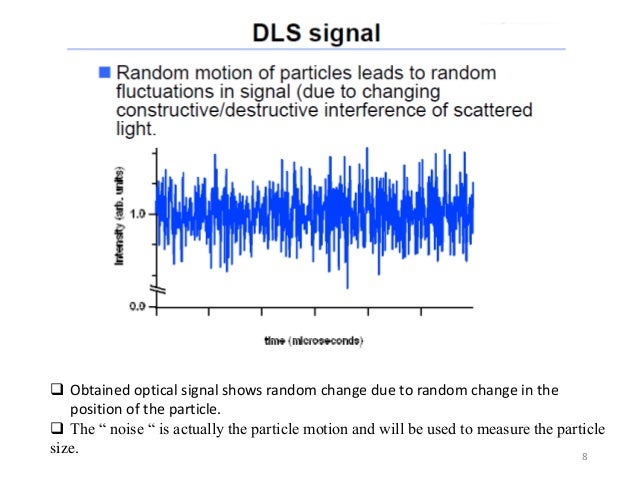

- #Dynamic light scattering instrument full
- #Dynamic light scattering instrument verification
- #Dynamic light scattering instrument software
With 4-pumps, a pH probe and the possibility of temperature control, this accessory allows user to measure the variation of zeta potential of their sample with concentration of an additive (such as acids, bases, surfactants, dispersing agents, salts, etc.) Features at a glance Sizing The instrument has also an autotitrator unit with a volume of 20 mL. The instrument also has the capacity of zeta potential detection by Phase Analysis Light Scattering (PALS) measurements for samples with low mobilities. The measurements are based on the principles of Dynamic Light Scattering (DLS) for particle sizing and distribution, and based on Doppler velocimetry (electrophoretic light scattering or ELS) for zeta potential measurement. The NanoBrook Omni particle size and zeta potential analyzer incorporates all you need for fast, routine, sub-micron measurements of size and zeta potential. With the many inputs of the Time Tagger, you can also easily scale your DLS setup to many detection channels and integrate it into more sophisticated experiments.Dynamic light scattering: Brookhaven Instrument NanoBrook OmniĬontact: violeta.toader mcgill.ca (Violeta Toader) - Location: OM 21 All of this is possible without having to repeat the physical measurement. In addition, you can later change your autocorrelation parameters, investigate different time scales more closely, or compare different segments of your time trace in detail.
#Dynamic light scattering instrument full
You have access to the full measurement data, allowing easy storing and post-processing of your raw photon counts.
#Dynamic light scattering instrument software
The Time Tagger, on the other hand, offers all the benefits of a software correlator. Most commercial DLS systems calculate the correlation directly in hardware with a fixed number of channels and lag times, returning only the correlation curve. One can thus determine the particle size from an exponential fit to the autocorrelation and its decay time. Because large particles have higher friction and move more slowly in a liquid, the autocorrelation of the photon time trace decays more slowly than for small particles. The Time Tagger software calculates a fully logarithmic autocorrelation on the detected photon time trace. Detecting the speckle pattern with a single photon detector at a fixed angle and tracking the intensity of the scattered photons with the Time Tagger, one can observe a fluctuating intensity time trace corresponding to the Brownian motion of the nanoparticles. Shining coherent laser light onto the sample results in scattering by the particles, and a speckle pattern is visible. DLS measures these fluctuating motions and their characteristic time scale, which can then be related to the nanoparticle size distribution. Nanoparticles inside a solution undergo random movements, the so-called Brownian motion. DLS can measure nanoparticles as small as one nanometer and as big as a few microns. And therefore, if the tested sample is suitable or if unwanted agglomeration of the particles has occurred. One can see within seconds if the measured size of the dissolved nanoparticles is within expectations.
#Dynamic light scattering instrument verification
DLS allows for fast and non-invasive verification of sample quality and ensures a stable production process. It is a well-established method in many areas that focus on nanoparticles, such as colloid and polymer science, pharma and food industries, and cosmetic and paint product development. Dynamic light scattering (DLS) is an optical analysis method for particle sizes in solutions.


 0 kommentar(er)
0 kommentar(er)
